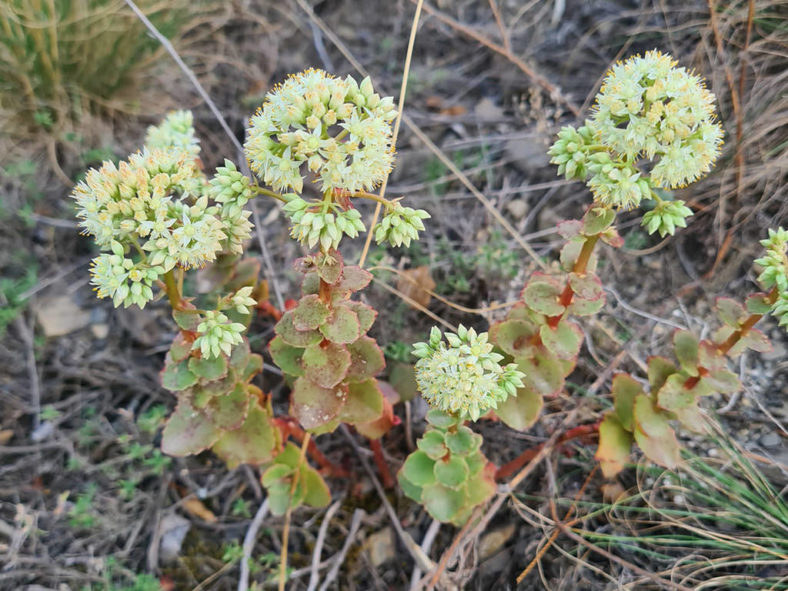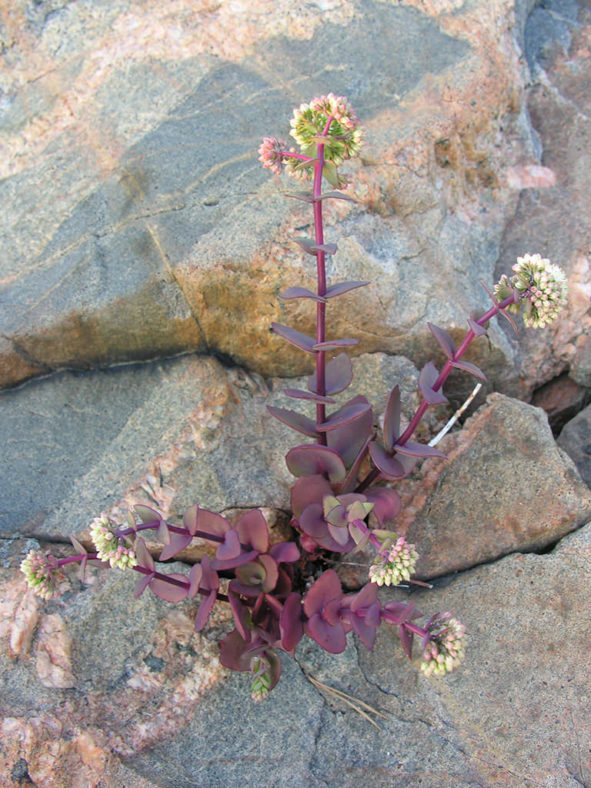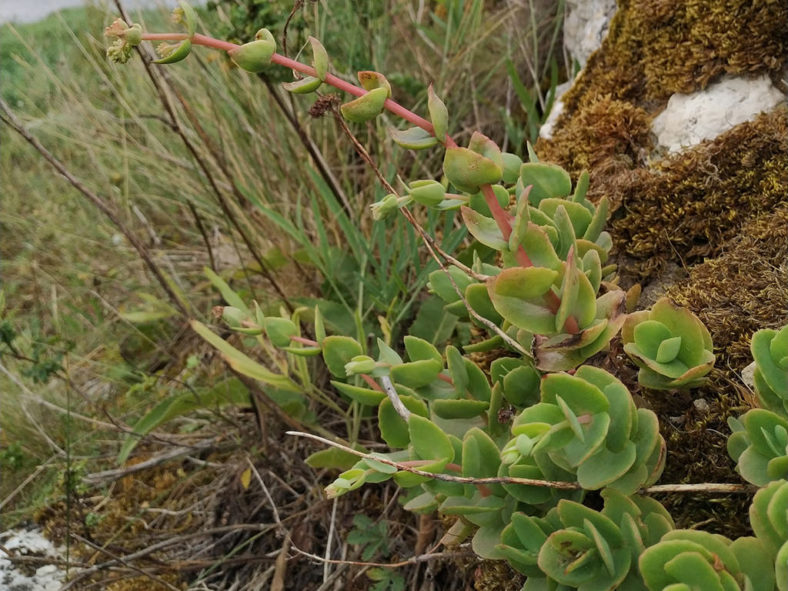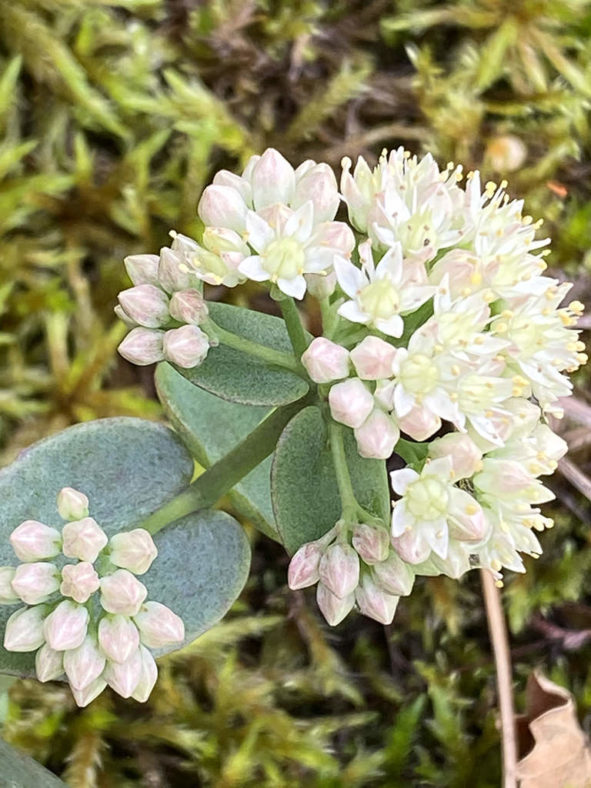Scientific Name
Hylotelephium telephium subsp. ruprechtii (Jalas) H.Ohba
Synonym(s)
Hylotelephium maximum subsp. ruprechtii, Hylotelephium ruprechtii, Sedum maximum subsp. ruprechtii, Sedum ruprechtii, Sedum telephium subsp. ruprechtii
Scientific Classification
Family: Crassulaceae
Subfamily: Sempervivoideae
Tribe: Telephieae
Genus: Hylotelephium
Etymology
The subspecific epithet "ruprechtii (roo-PREK-tee-eye)" honors Franz Josef Ruprecht (1814–1870), an Austrian-born physician and botanist active in the Russian Empire, where he was known as Frants Ivanovič Ruprekht.
Origin
Hylotelephium telephium subsp. ruprechtii is native to meadows and river margins in northeastern Europe.
Description
Hylotelephium telephium subsp. ruprechtii, also known as Hylotelephium maximum subsp. ruprechtii, is a succulent plant with opposite, nearly circular leaves lobed like the shape of a heart and wrapped around the decumbent or procumbent stems. The stems can grow up to 16 inches (40 cm) long. The leaves are glaucous blue-green, tinged red on the margins, and range from almost entirely to quite deeply toothed on the same plant.
The flowers are whitish to yellow-white with pink-tinted edges and appear from late summer to fall. In winter, the foliage dies back to the ground, and new growth appears in spring.

How to Grow and Care for Hylotelephium telephium subsp. ruprechtii
Light: This succulent prefers full sun. It tolerates light to partial shade in hot summer climates but will produce weak, floppy growth when grown in too much shade. Plant your H. telephium subsp. ruprechtii in an area of your garden that gets 6 hours of sunlight a day.
Soil: H. telephium subsp. ruprechtii does not need rich soil, but it does need excellent drainage. Choose a commercial potting mix for succulents, or make one yourself.
Hardiness: This plant is cold-hardy and tolerant of heat and drought, making it a popular outdoor succulent. H. telephium subsp. ruprechtii can withstand temperatures as low as -30 to 30 °F (-34.4 to -1.1 °C), USDA hardiness zones 4a to 9b.
Watering: The best way to water H. telephium subsp. ruprechtii is to use the "soak and dry" method. Get the soil completely wet, and then wait until it is dry before watering again.
Fertilizing: Feed annually with a balanced fertilizer. According to package directions, apply the fertilizer to the soil in spring as new growth appears.
Repotting: Plants in containers require little more care than those in gardens. Repot your H. telephium subsp. ruprechtii when it outgrows its current pot by moving it to a larger pot to hold the plant better. Spring is the best time to repot this plant. Make sure the soil is dry before you begin the repotting process.
Propagation: This succulent can be grown from seeds, division, or stem cuttings. Sow seeds in spring. Dividing your H. telephium subsp. ruprechtii is very easy and can be carried out almost any time during the growing season, though it is probably best done in spring or early summer. Propagate by stem cuttings in summer.
Learn more at How to Grow and Care for Hylotelephium.
Toxicity of Hylotelephium telephium subsp. ruprechtii
H. telephium subsp. ruprechtii can be mildly toxic to humans and animals.
Links
- Back to genus Hylotelephium
- Succupedia: Browse succulents by Scientific Name, Common Name, Genus, Family, USDA Hardiness Zone, Origin, or cacti by Genus
Photo Gallery
Click on a photo to see a larger version.


